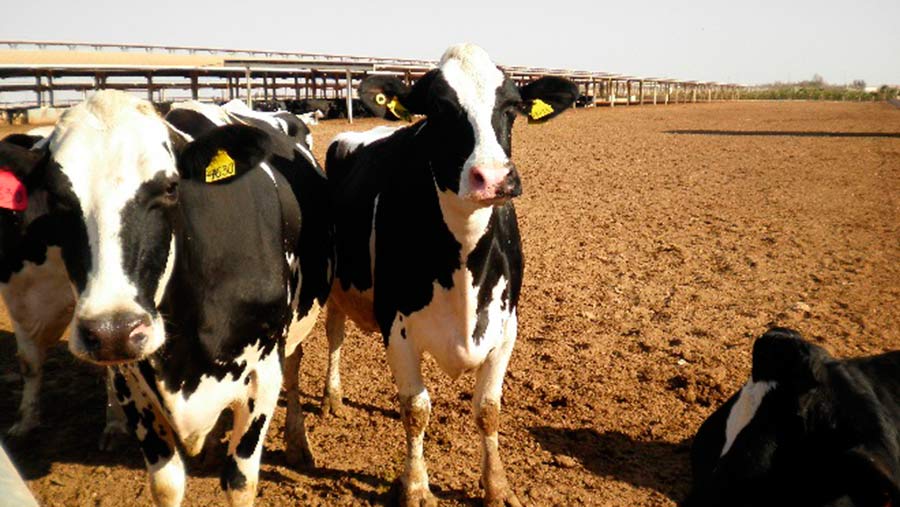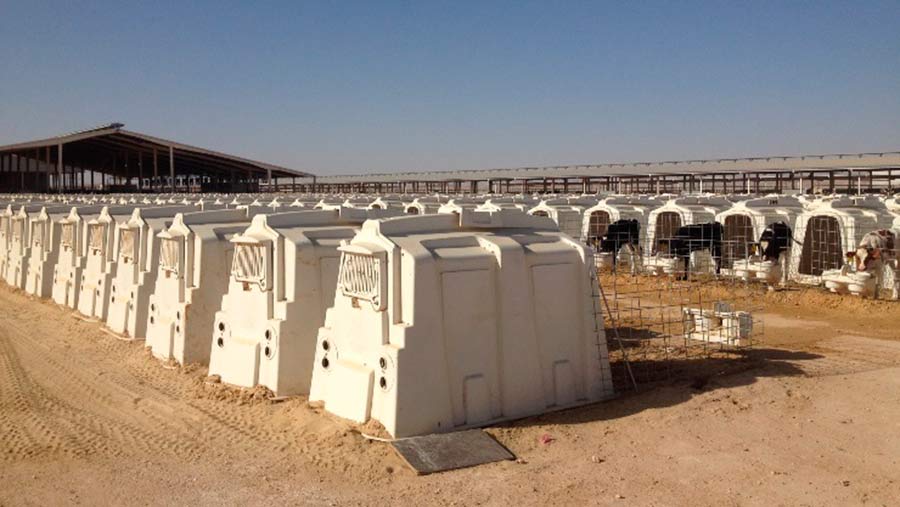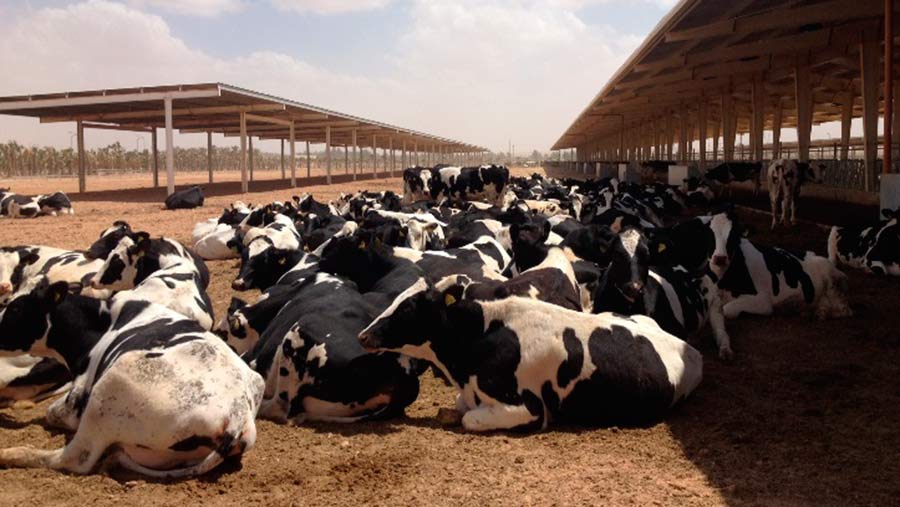Fertility Focus: Lessons from a large-scale Jordan dairy

Vet Ian Roper worked on a start-up dairy unit in Northern Jordan during 2015-16. In this article, part of our Fertility Focus series, he discusses what five key things UK dairy farmers can learn from their fertility management.
The unit I worked at in northern Jordan was aiming to milk 3,000 Holstein-Friesian cows four times a day through a 52:52 rapid-exit parlour.
The unit is part of an integrated system, with the bottling plant on site. Dairy products, alongside fruit juice, are sold in the company’s own downtown Amman supermarket.
It’s an ambitious development, involving the importation of thousands of in-calf heifers from northern Europe.
See also: Advice on buying dairy cattle from abroad

Ian Roper
It is difficult to look at such a large unit without wondering if this is the future for dairying everywhere.
But for the relatively small British dairies feeling beleaguered, this operation is not only successful because of a solid milk price, cheap labour and economies of scale, but also the willingness to follow an evidence-based, welfare-focused approach.
There is also a ruthless discipline in maintaining this approach and getting the right people for each job, with an international community of dairy specialists for all job roles.
The farm also benefits from the clear direction of a highly focused farm manager, who knows what he wants and is receptive to advice.
The system runs on a series of veterinary protocols. Everything from calving, foot trimming and euthanasia is described in bullet-point form, so everyone knows the correct method.
Breeding strategies
One of the most satisfying aspects of the experience was the farm management’s openness to embrace high-level breeding strategies.
They understood the benefits of controlled breeding versus reliance on heat detection. It eliminates inaccuracies concerning either missed or false heats.

We had detailed discussions about the latest research and decided on an appropriate pre-synchronisation protocol for all cows’ first service. We also served detected returns based on a tail-chalk system.
PD negatives would undergo a resynchronisation protocol. On the face of it, this could appear a quite costly and complex system of multiple hormone injections. However, the autolocking yolk set-up and organised, experienced operators makes for an efficient and profitable process.
A key decision was made to use progesterone devices in the synchronisation protocols. The decision was taken, despite the additional cost, because of the high feed intakes and metabolic rates of the cows, which may suppress natural progesterone levels.
Cow-side, milk progesterone tests could be run to assess progesterone on an individual cow basis.
Heat challenges on fertility
A challenge to fertility is the semi-arid climate, with summer temperatures of 40C. Even though winters can be cool, heat stress in the summer is a real concern. From previous experience in super-hot Saudi, the unit designer included simple, effective solutions.
The open yards have additional shaded areas, fans and water sprinklers, reducing the risk of heat stress and the associated effects on fertility, gut health and overall welfare.
A lot of emphasis is put on getting the ration right, with no corners being cut when specific feed availability is challenging.

Nothing is grown locally, and the entire ration is made from purchased, mostly imported ingredients. Feed is put out four times a day at each milking, pushed up constantly and adjusted based on intakes at previous feed.
This allows body condition to be precisely managed through the production cycle, and prevents negative energy balance that would compromise fertility.
The role of health in fertility management
The final key factor in fertility management is effective control of infectious disease. Some of the challenges in Jordan is the same farmers face in the UK – BVD, IBR and leptospirosis are all potential threats, among many others.
The difficulty is a lack of accredited local labs, which makes testing for diseases difficult. Some tests are performed in house alongside a heavy vaccination schedule to control infectious disease.
There is a fine line between covering all threats and overloading the response of the animals’ immune systems, and the effect vaccines themselves can have on production.
Perhaps the hardest thing about working abroad is the requirement to understand the local exotic disease threats, and being able to identify them should there be a breakdown. Brucellosis, foot-and-mouth and lumpy skin disease are all present in the area.
Sometimes, there are no perfect solutions, but awareness is key.
Overall, the experience has been very rewarding, not least in highlighting some things farmers in the UK might learn from. This includes:
- Placing the highest degree of importance on ration consistency and attention to detail in maximising intakes
- The advantages of milking and feeding more than twice a day
- The willingness to invest in controlled breeding – not just for problem cows
- Focusing on cow comfort and reduction of stress
- An all-encompassing infectious disease control strategy.
